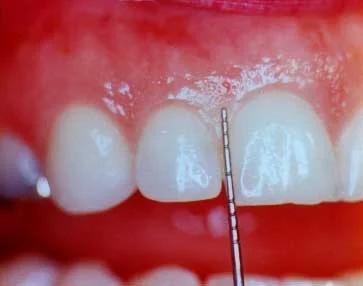As you probably know, nearly every surface of the human body is home to bacteria. In even the cleanest, healthiest individuals, bacteria outnumber human cells by a ratio of 10 to 1! Your mouth is no exception to this, as it contains one of the the highest bacterial counts and organismal diversities in the entire body. With this in mind, microorganisms play an enormous role in dentistry and oral diseases. Today, we want to take a closer look at how bacteria are major contributors to tooth decay and cavities.
Nearly every surface of your teeth are covered in a bacterial structure called a biofilm. This formation is a sticky “home” that the bacteria produce to allow them to adhere to hard surfaces. While the biofilm is still soft and removable, we call it plaque. Proper homecare can remove plaque daily and keep the bacterial count down. However, if the plaque remains undisturbed for about 48 hours, it starts to harden and turn into tartar. Once tartar forms, it creates a strong bond to enamel that needs to be removed by a dental professional.
In the dental biofilm, the most destructive bacteria is known as Streptococcus Mutans. S. Mutans likes to colonize teeth early on in biofilm formation, along with many other species of microorganisms. When we eat sugars, starches and carbohydrates, S. Mutans processes the glucose molecules to make acid. This acid, in turn, is a primary contributing factor to tooth decay. Thus, individuals with a high S. Mutans count typically have an elevated risk for cavities.
Interestingly enough, S. Mutans species are highly correlated between children and their caregivers. Even adopted children and kids who hereditarily lack teeth tend to have the same S. Mutans breeds as their mothers, fathers or nannies. With this in mind, it is important to remember not to share utensils or cups with your children (if possible). Furthermore, cleaning off pacifiers or other teething toys with your own saliva is not recommended. Ideally, you want to lower or prevent your child’s exposure to S. Mutans for as long as possible.
Fortunately, there are a number of products targeted against S. Mutans that you are likely already using. In addition to remineralizing enamel, fluoride has been shown to disable a specific bacterial enzyme and prevent it from making energy. This has a significant impact on how fast and large S. Mutans colonies can grow. Furthermore, the sugar substitute xylitol is known to interfere with how S. Mutans can adhere to tooth structure. Xylitol is a natural compound made by plants that is used in a number of sugar free gums and mints. If you are chewing Trident, Ice Breakers or Spry gum (or others), you are getting a healthy exposure of Xylitol every day!










